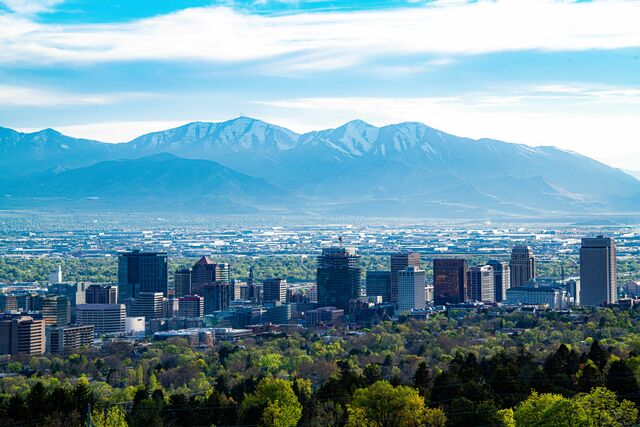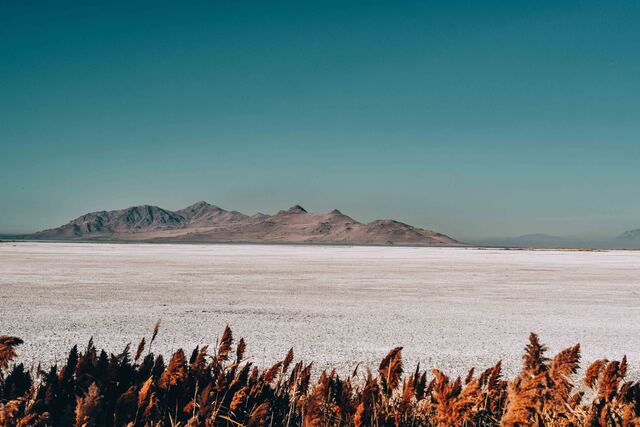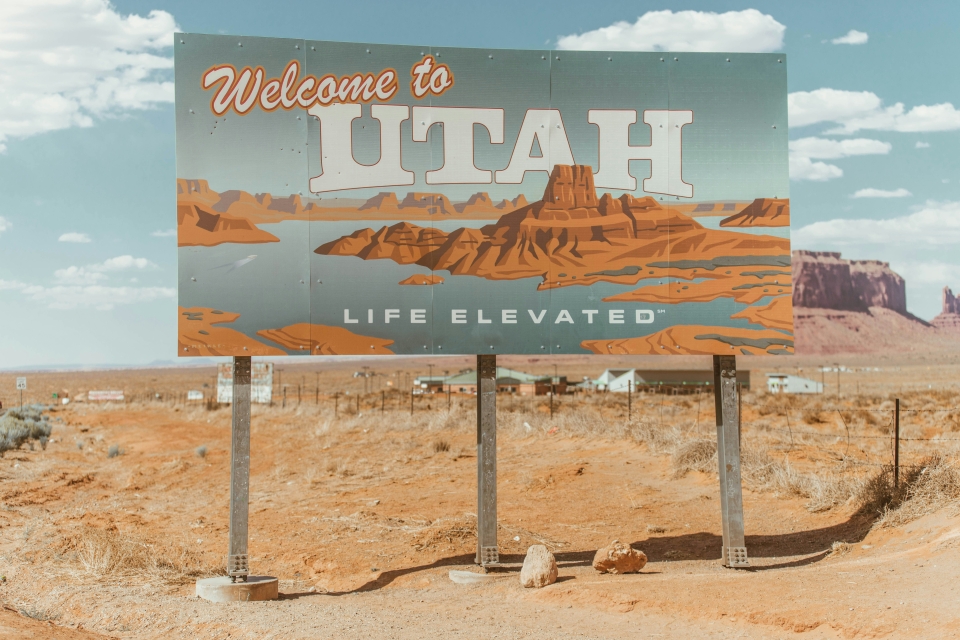What happens when you mix a cultural heritage of hard work and fiscal responsibility with forward-focused economic policy in an area rich in natural resources? What do you get when you combine the greatest snow on Earth with the best economy in the United States?
You end up with Utah, the state that has been ranked the best for economic outlook sixteen years in a row.1
Utah by the numbers:
- Top 10 lowest unemployment rate (2.6%)1
- Best State & Best Economy2
- 4 of 5 Best Small Cities for starting a Small Business3
- #2 Most Financially Literate State4
- Best State to Start a Business5
- Best Performing Large City6
- Best Performing Small City7
- #1 State for GDP Growth8
- #1 State Economy9
What’s the connection to international diplomacy though? Utah Global Diplomacy recently hosted members of the Rumsfeld Fellowship program from the Central Asia/Caucasus region. The program is facilitated through Open World, a program of the Congressional Office for International Leadership that is administered by FHI360. It brings together citizens of post-Soviet countries with people and resources in America to encourage leadership and public service and promote democracy and economic liberalism.
Lkhagva Erdene was one of the Rumsfeld fellow who traveled to Utah with the most recent cohort. Lkhagva is the Director of External Affairs and Communication at Oyu Tolgoi in Mongolia, one of the largest mining projects in the world. (Oyu Tolgoi is run by Rio Tinto, the same company that runs the Kennecott Bingham Canyon mine.) He has a master’s degree in journalism from Hong Kong University and worked for years as a journalist.
The Rumsfeld Fellows were able to meet with leaders in a variety of business sectors, discussing topics like international business reach at doTerra, small business funding at KeyBank, and entrepreneurship at One Million Cups. Of the trip, Lkhagva said, “First of all, we are very privileged to be able to visit Utah and meet the people who are living here and running the city and contributing to the city from different parts of the society.” In addition to the groups mentioned above, the group of six was also able to meet with organizations such as the Stirling Foundation, World Trade Center Utah, Utah Microloan Fund, and visit various cultural activities.
 Photo by Brent Pace on Unsplash
Photo by Brent Pace on Unsplash
The visitors loved Salt Lake City’s beautiful surroundings. Lkhagva said, “It’s deeply moving because there's just something about high mountains and valleys and being close to nature. Yeah, I think the countries where we come from are beautiful, but I think the semi-desert landscape of Utah is very mystical.” Utah is indeed much like Lkhagva’s home country of Mongolia. Home to desert, high plains, and vast reserves of natural resources, Mongolia is a country of 3 million people making a rapid transition to a market economy fueled by more skilled workers and exports. Landlocked, water-scarce, and with a growing economy, the country stands to benefit greatly from Utah’s economic strategy to grow while mitigating these issues.
Utah has the potential to show its model economic strategy to more than just Mongolia, however, and the consistency in economic growth amid global uncertainties has garnered attention. Open business practices, strong global investment, and business sector diversification have all lifted Utah to a strong economic position. Lhkhagva’s conversation with a KeyBank Vice President revealed the potential for a better communication strategy to showcase Utah's success story. Lkhagva said "You know, it's incredible, where the rest of the world is stagnating, and we're all watching China… Utah is feeling the same [economic pressures], yet you're still delivering that economic growth and industry diversification.”
Lkhagva dubs this phenomenon "Utahnomics," a term that encompasses Utah’s economic success and ability to overcome challenges by diversifying its economy and focusing on the future. Sixteen years of continuous economic growth have proven that Utah has so far employed a winning strategy. Various factors have contributed to this growth, including a history of natural resource utilization, development and diversification, and continual public dialogue and calls to action regarding the accountability of elected officials.
Resource extraction

Photo by Author
Utah is rich in natural resources. Metals and minerals; hydrocarbons like oil, gas, and coal; geothermal energy, sun, and wind - Utah’s resources have powered the economy in the past and is well-poised to play a critical role in moving it into the future. With the green revolution taking place and energy markets unstable worldwide, Utah’s energy future is in flux. There are, however, emblematic projects that show the future of the state’s ability to respond to changing conditions.
- The Kennecott copper mine is a long-running symbol of Utah's economic footprint. Operations were halted in 1985, but its subsequent purchase and modernization by Rio Tinto restored profitability. In 2022 the mine produced 148,000 tons of copper, more than 11% of the US total copper mine production. That copper goes to produce and transmit power across Utah, the United States, and the entire world. Mine expansion plans predict a production of almost 2.5 million tons of copper between 2026 and 2040.
- The Intermountain Power Plant in Delta is already in the process of storing massive amounts of natural gas and hydrogen in underground salt caverns; by 2025, the coal-fired plant supplying 1.5 million homes in southern California will be taken offline. By 2045 the new LNG/hydrogen plant will run fully on hydrogen gas, whose combustion byproduct is water vapor.
- Utah FORGE is a project funded by the US Department of Energy and managed by researchers from the University of Utah. It is the nation’s most advanced geothermal energy production plant, utilizing a series of wells drilled straight into heated rock to pump water into the well and produce steam that will, when operational, spin turbines and produce electricity.
Water plans
 Photo Gabriel Tovar on Unsplash
Photo Gabriel Tovar on Unsplash
Like Mongolia, one serious issue facing Utah is water usage. As the western United States grows more arid, it follows a global trend of drought and water scarcity felt acutely from southern Europe to the Middle East and Central Asia. Utah’s recent struggle to keep water in the Great Salt Lake has been a contentious issue in local politics. The effects of climate change on snow and rainfall totals has reduced the flow of critical waterways in Utah that feed the lake at the same time that housing development and agricultural water usage have exacerbated the Utah water supply. Should the Great Salt Lake dry up, vast fields of toxic dust containing chemicals like arsenic would become airborne and drift across the Wasatch front, home to millions of people.
The Utah legislature has dedicated hundreds of millions of dollars to improve water usage in northern Utah and increase the efficiency of agricultural operations. Concerned citizens and activist groups have filed lawsuits against the state accusing it of not doing enough to protect Utah’s residents. These efforts to hold elected officials accountable to their promise to protect the rights of citizens (in this case, the lake is public property managed by the state) to maintain public health are a model of the need for citizens to be involved in the public sphere and get involved with the processes that govern them.
Tech diversification
Beyond the natural resource extraction that makes it possible to live here, Utah has invested rapidly in growing its workforce and tech industries. Tech companies now account for more than 10% of Utah’s economic output. The southern Salt Lake valley and northern Utah valley areas have seen a rapid influx of tech workers and companies, represented in part by massive development in the area which has been dubbed Silicon Slopes.But Silicon is not just the physical location of these companies. It has also become the Silicon Slopes Summit, a large-scale event that brings together tech-focused consumers, founders, and investors. The idea of Utah’s iconic mountains composed of a technological backbone has become a reality as the summit has hosted tens of thousands of visitors and some of the biggest names in business and technology across eight years. The state's success in attracting foreign investment and fostering sectors like technology might come as a surprise to some. Despite being known for its conservative politics and caricatured for its dominant religion, there's an underlying openness in Utah. "People want to connect with the rest of the world. They see value in understanding interfaith dialogue, respecting other people's cultures, and a genuine curiosity to know more," noted Lkhagva, emphasizing the healthy signs for Utah's future.
Beyond economic prowess, Utah stands out for its entrepreneurial and welcoming spirit. In Lkhagva’s words, "the greatest experiment on Earth" is truly something special. A messy and contentious experiment sometimes, but a successful one. Utah’s combination of people, foresight, and innovation have been its trademark and path to success, and these same factors are what will continue to ensure that Utah will succeed in future.
Despite a brief three-day visit, the Rumsfeld Fellows left with a lasting impression and a commitment to stay connected with Utah. As one participant summed it up, “If we can make it in our lifetime … I think Utah is a state that can offer something mesmerizing."

